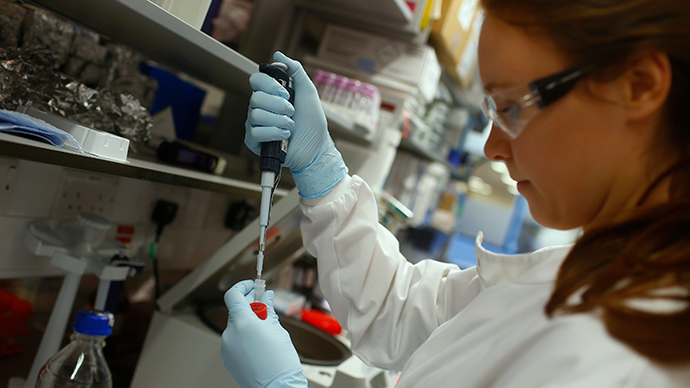New ‘kill switch’ technology seen as cure for GMOs run wild

Newly developed “kill switch” biotechnology may make it easier for corporations to use genetically modified organisms in the wild. More work needs to be done, researchers say, before what was science fiction until recently becomes scientific fact.
Using a gene-editing tool called CRISPR, researchers at the Massachusetts Institute of Technology (MIT) have developed a process that, instead of editing engineered DNA strands, erases them entirely. In laboratory tests, GMO bacteria encoded with this “kill switch” died within fifteen minutes of encountering the substance designed to trigger it, a sugar molecule called arabinose.
“We could do a lot of good by being able to engineer an insect, for example, that goes out into the wild and has some disruptive capability over a disease,” Christopher Voigt, associate professor of biological engineering at MIT, told RT. “But we want to be able to control that, and that’s really difficult as soon as you go into a real setting.”
“The actual industry around genetically modified bacteria is enormous,” professor Voigt said. “Industrial biotechnology is a $100 billion a year industry in the US,” producing anything from cups and containers to car components.
There are many opportunities for engineered organisms to be helpful when released into the wild, from mosquitoes designed to eradicate disease to bacteria that could clear up pollution and fungi that could help plants grow.
READ MORE: GMO that kills: GM-cotton problems drive Indian farmers to suicide
The findings of professor Voigt’s team, published in the journal Nature Communications two weeks ago, have already attracted national attention. Even supporters of genetically modified organisms are concerned with what might happen if engineered life-forms escaped into the wild. The self-destructing DNA technology offers the possibility of containing that threat.
According to the paper, the team’s “DNAi” constructs were designed to respond to specific input – contact with arabinose – that would trigger the DNA strands edited by CRISPR and Cas9 to self-destruct. The system is reportedly precise enough to target specific DNA strands, so it can delete only modified genes while leaving others undisturbed.
“More sophisticated control can be achieved by connecting the device to the output promoter of a transcriptional genetic circuit — for example, genetic logic to integrate signals from multiple sensors that define a cocktail of chemicals specific to a media or environment,” says the paper.
In theory, the DNAi “kill switch” could be programmed to destroy the engineered DNA as a copyright protection measure, or kill the organism itself as a safety mechanism.
Didn't we learn that life, uh, finds a way? - http://t.co/e4HH0ujEsI
— Eric Friedman (@EricFriedman) May 23, 2015
“A lot of these kill switches could be applied to a number of different organisms,” professor Voigt told RT. Though triggers would need to be adjusted, “the basic chemistry is about the same.”
Because DNAi is compatible with other GMO containment protocols – for example, ones that trigger cell death, DNA deletion, or re-coding of the genome with non-natural amino acids – “one can imagine combining these systems to create layers of redundancy to ensure that engineered organisms are viable in particular environments, and if they escape, they eliminate their synthetic DNA,” the team’s paper concluded.
Getting the general public to believe in the safety of these “kill switches” after seeing a “Jurassic Park” sequel this summer, however, may be another matter.












